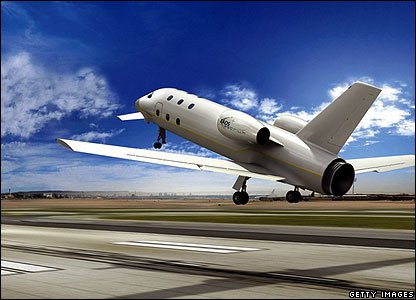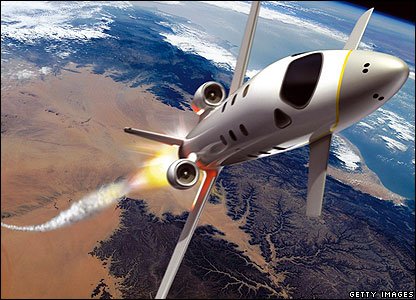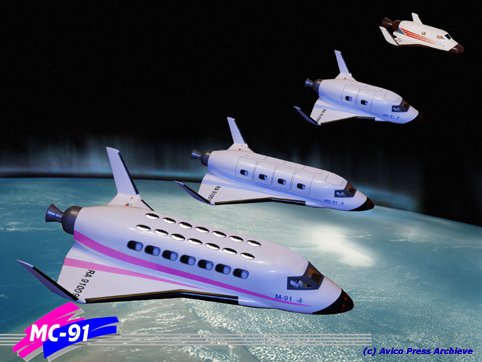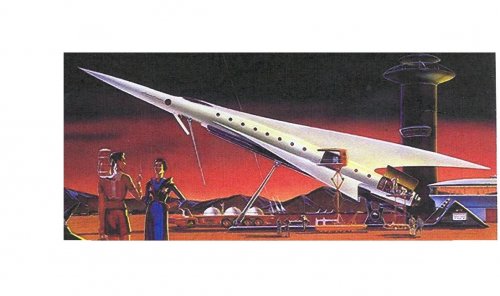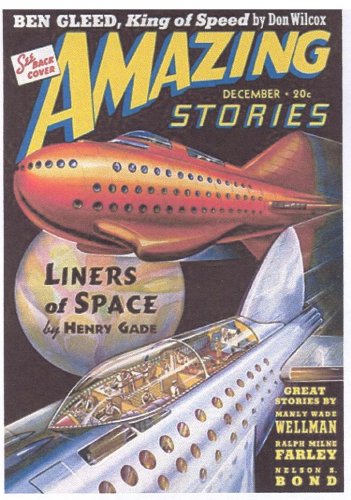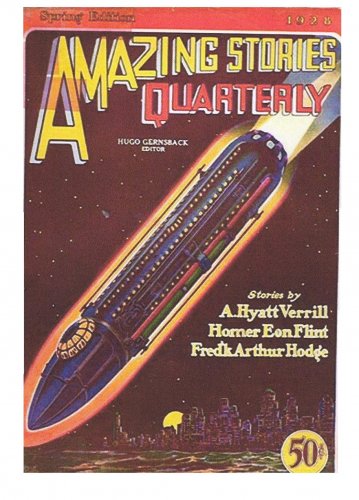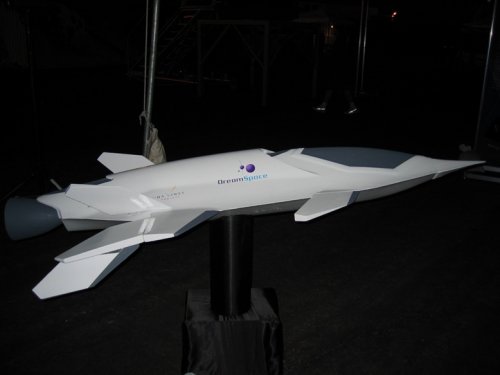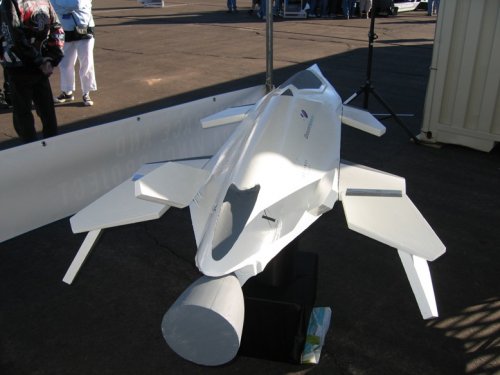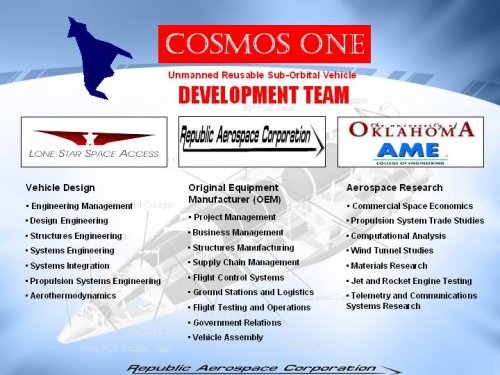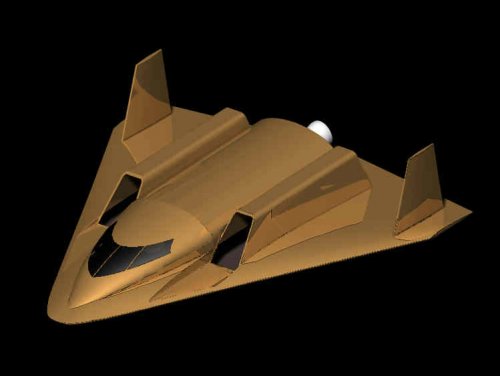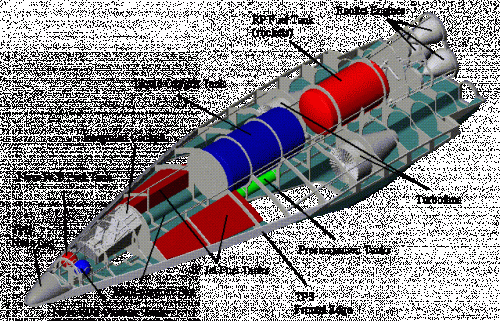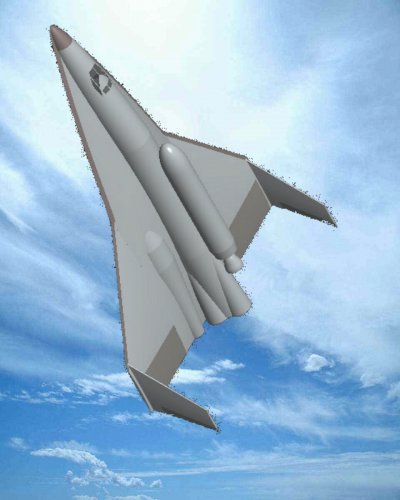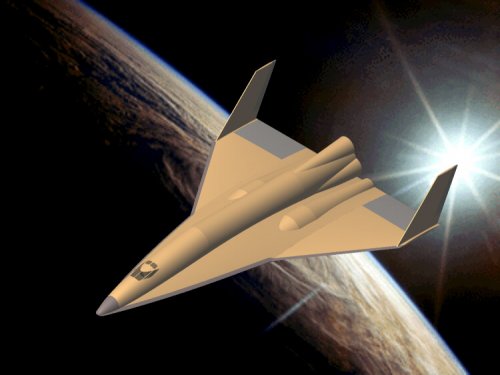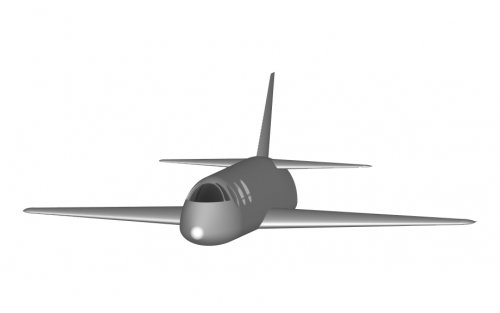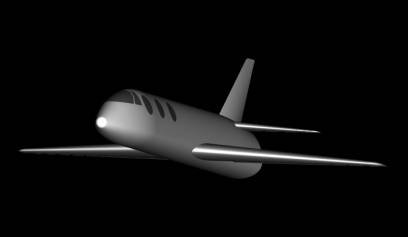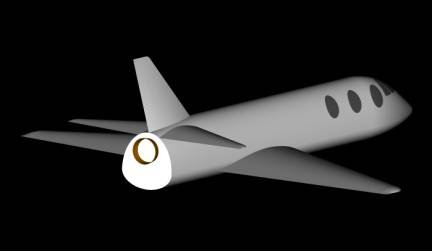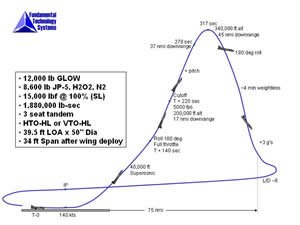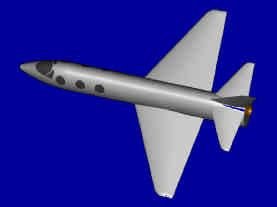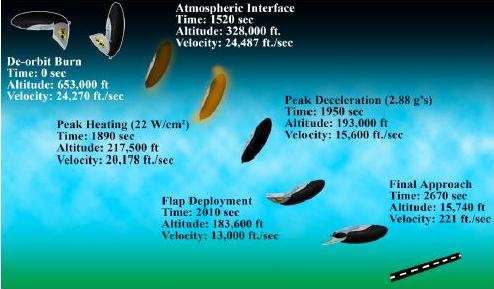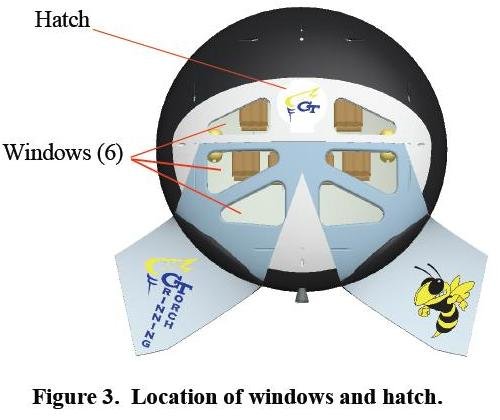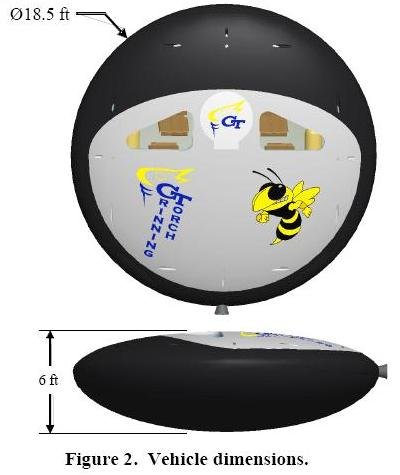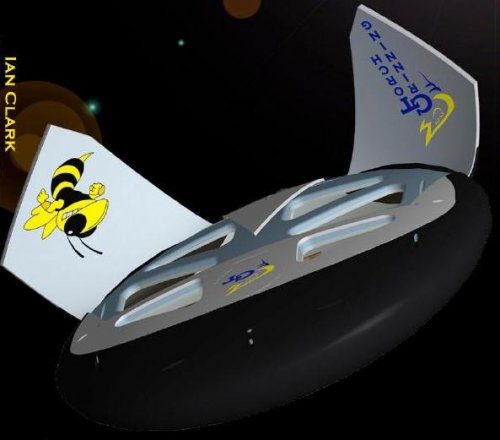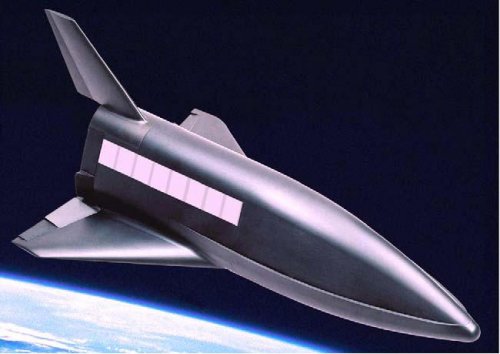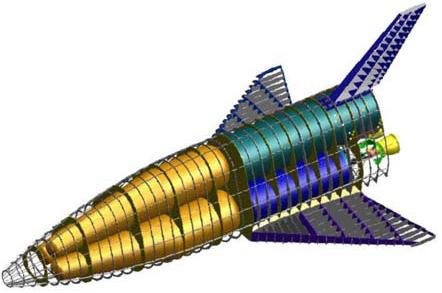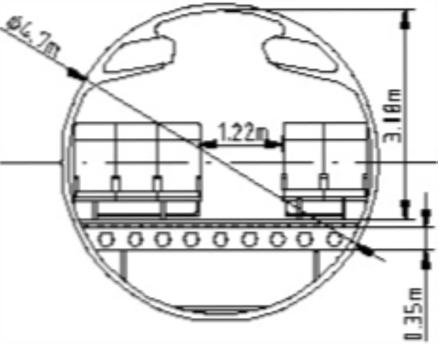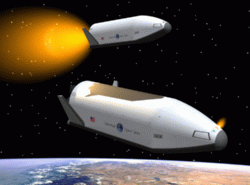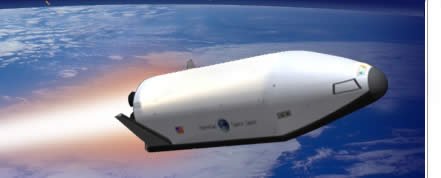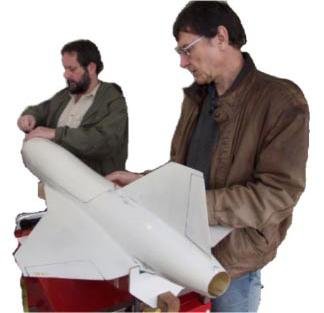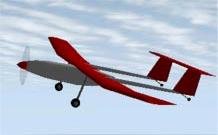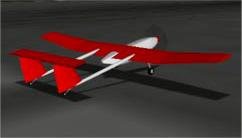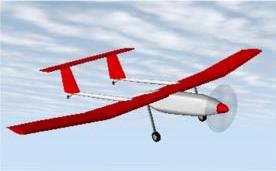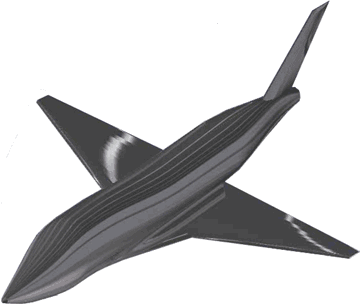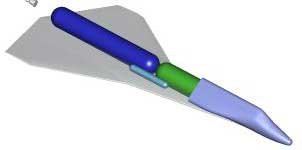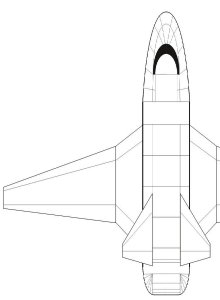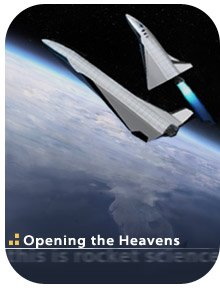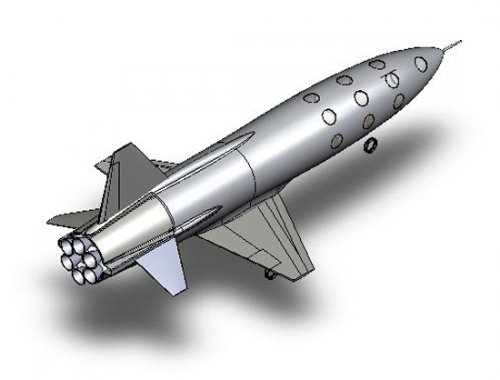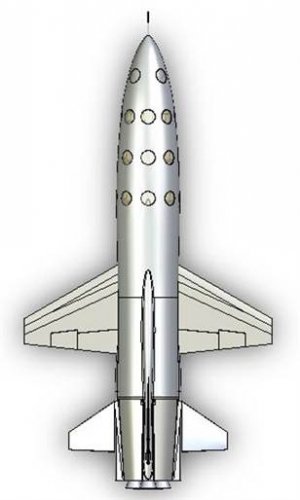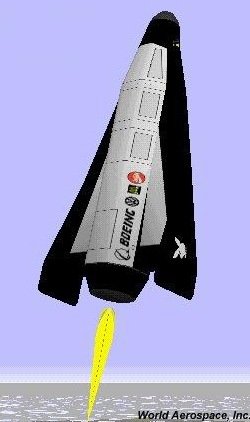You are using an out of date browser. It may not display this or other websites correctly.
You should upgrade or use an alternative browser.
You should upgrade or use an alternative browser.
Plane-rocket for tourist flights
- Thread starter hesham
- Start date
airrocket
Dreams To Reality
Great concept not much news lately....????
FutureSpaceTourist
ACCESS: Top Secret
- Joined
- 10 March 2010
- Messages
- 590
- Reaction score
- 34
airrocket said:Great concept not much news lately.... ??? ?
Not convinced it's a great concept if you factor in cost. It hasn't gone anywhere because they couldn't raise the €1 billion needed!
I've been having fun trawling through this website looking for space tourism spaceplane concepts and there are quite a few. (If you're looking for space tourism rockets try here.)
All the following spaceplanes never achieved (or are yet to achieve) the funding required (which in some cases led to the closure of the associated companies):
- Advent Launch Services Advent
- ARCA Orizont 2B
- Benson Space Company suborbital vehicle design
- Beyond Earth Enterprises Raven
- Bristol Spaceplanes Ascender
- Bristol Spaceplanes Spacecab
- Bristol Spaceplanes Spacebus
- Canyon Space Team XPV
- Cerulean Freight Forwarding's Kitten
- Cerulean Freight Forwarding's Calico and Angora
- da Vinci Project / DreamSpace
- Dassault VEHRA / VSH (VSH picture below)
- DLR Spaceliner
- EADS Astrium (as above)
- Fundamental Technology Systems' Aurora
- Georgia Tech's Reusable Exploration Vehicle
- Hopper Plus
- Kelly Space Astroliner (I believe they were an X-prize competitor so must have been proposed for tourism use)
- Kistler Rocketplane
- Lone Star Space Access' Cosmos Mariner
- Malaysian chapter of STS MC
- Malaysian chapter of STS MX
- Marcus Aerospace Explorer
- Orbital Sciences Corporation CCDev2 proposal
- PanAero Condor-X
- PanAero Millennium Express
- PanAero SabreRocket
- PanAero X Van
- PanAero X Van 2001
- PanAero X Van 2008
- PanAero X Van 2011
- Pioneer Pathfinder Rocketplane
- Project Enterprise
- Myasishchev C-21/Explorer
- Myasishchev MK-91
- Reaction Engine's Skylon (perhaps not primarily for tourism but does have passenger module)
- Space Access' Skyhopper
- Space Clipper International SC-1
- SpaceDev Dream Chaser
- Spaceflight SF-01
- Spacelinq
- Vela Space Cruiser
- XCOR Xerus
- World Aerospace Inc Alpha spaceplane
Of course the only potential tourism spaceplane to have actually flown to space is SpaceShipOne (although hopefully SpaceShipTwo will make it in testing in the next 12 months or so).
I'm sure there are some other tourism spaceplanes out there, please raise any I've missed.
Update 29/05/2010: added PanAero X-prize concepts Condor-X, SabreRockect and X Van
Update 01/06/2010: added further PanAero concepts, FTS Aurora, CFF Calico & Angora and Lone Star Space Access Cosmos Mariner
Update 12/06/2010: added Space Access' Skyhopper
Update 22/06/2010: added Georgia Tech's Reusable Exploration Vehicle
Update 26/06/2010: added Spaceflight SF-01
Update 27/06/2010: listed Bristol Spaceplanes' Spacecab and Spacebus separately
Update 09/07/2010: added link to separate space tourism rocket list
Update 26/09/2010: added Advent Launch Services X-prize entry
Update 09/10/2010: added Malaysian chapter of Space Tourism Society MC and MX concepts
Update 28/10/2010: added Hopper Plus concept and Space Clipper International SC-1
Update 29/10/2010: added XCOR Xerus
Update 31/10/2010: added ARCA Orizont 2B
Update 17/11/2010: added Canyon Space Team XPV and Beyond Earth Enterprises Raven
Update 22/11/2010: added Marcus Aerospace Explorer
Update 20/12/2010: added Orbital Sciences Corporation CCDev2 proposal
Update 10/04/2011: added Spacelinq
Update 19/06/2011: added Benson Space Company suborbital vehicle and World Aerospace Inc Alpha spaceplane
FutureSpaceTourist
ACCESS: Top Secret
- Joined
- 10 March 2010
- Messages
- 590
- Reaction score
- 34
In collecting together the above space tourism spaceplane concepts, I noticed one missing from this site: DreamSpace, so I thought I'd add some info here.
DreamSpace is a follow-on from the Ansari X-prize da Vinci project. It was announced at the October 2006 X-prize cup (a New Scientist report is at http://www.newscientist.com/article/dn10320-former-x-prize-contender-plans-new-spaceships.html). A series of three suborbital vehicles were planned:
According to a report at http://www.msnbc.msn.com/id/15303947/ the vehicles are modelled after Boeing's Bird of Prey experimental plane as well as the NASA X-36 prototype. Graphics/model of the XF1, from the da Vinci website, are attached.
Plans changed a bit subsequently, see attached PDF that is DreamSpace's response to a NASA RFI on sub-orbital services. The RFI response talks about two vehicles XF1-A and XF1-B, similar to XF1 and XF2 but with no balloons or carrier planes. XF1-A would use a detachable (and recoverable) turbo-jet pod to get to a rocket ignition altitude of 40,000ft. XF1-B has a fully integrated combined cycle rocket engine [sounds very ambitious to me].
The DreamSpace website no longer appears to be functioning (it was www.dreamspace.net), only information is the basic description on da Vinci site. I assume that there's no funding available and things are not progressing?
DreamSpace is a follow-on from the Ansari X-prize da Vinci project. It was announced at the October 2006 X-prize cup (a New Scientist report is at http://www.newscientist.com/article/dn10320-former-x-prize-contender-plans-new-spaceships.html). A series of three suborbital vehicles were planned:
- XF1: a single-person prototype, to be air-launched from a balloon (like the da Vinci X-prize concept) and rocket engine then fired
- XF2: 'Excalibur class' - a two person vehicle (pilot and passenger) air-launched from a carrier plane with a max altitude of 160km
- XF3: 'Valkyrie class' - full scale operational vehicle, 2 pilots and maybe 7 passengers, also air-launched from a carrier plane
According to a report at http://www.msnbc.msn.com/id/15303947/ the vehicles are modelled after Boeing's Bird of Prey experimental plane as well as the NASA X-36 prototype. Graphics/model of the XF1, from the da Vinci website, are attached.
Plans changed a bit subsequently, see attached PDF that is DreamSpace's response to a NASA RFI on sub-orbital services. The RFI response talks about two vehicles XF1-A and XF1-B, similar to XF1 and XF2 but with no balloons or carrier planes. XF1-A would use a detachable (and recoverable) turbo-jet pod to get to a rocket ignition altitude of 40,000ft. XF1-B has a fully integrated combined cycle rocket engine [sounds very ambitious to me].
The DreamSpace website no longer appears to be functioning (it was www.dreamspace.net), only information is the basic description on da Vinci site. I assume that there's no funding available and things are not progressing?
Attachments
-
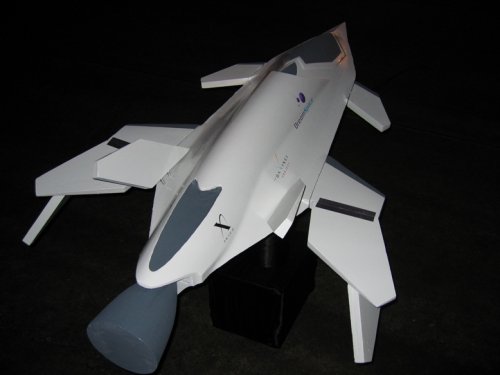 XPRIZE_Cup_2006_10_21_039 reduced.jpg129.2 KB · Views: 37
XPRIZE_Cup_2006_10_21_039 reduced.jpg129.2 KB · Views: 37 -
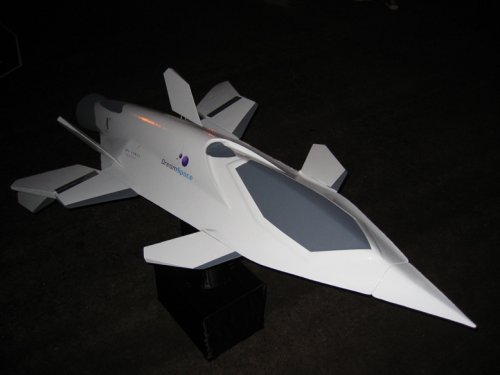 XPRIZE_Cup_2006_10_21_034 reduced.jpg128.7 KB · Views: 39
XPRIZE_Cup_2006_10_21_034 reduced.jpg128.7 KB · Views: 39 -
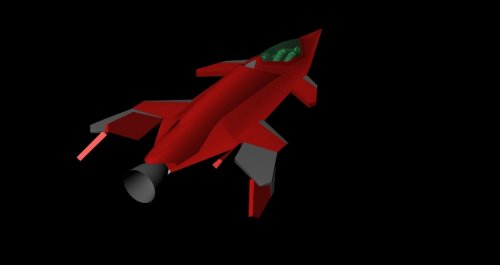 XF1_Rev_011_010 reduced.jpg28.7 KB · Views: 29
XF1_Rev_011_010 reduced.jpg28.7 KB · Views: 29 -
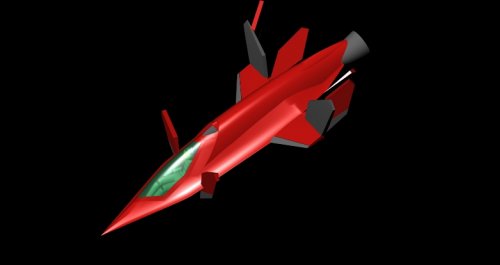 XF1_Rev_011_009 reduced.jpg37.2 KB · Views: 31
XF1_Rev_011_009 reduced.jpg37.2 KB · Views: 31 -
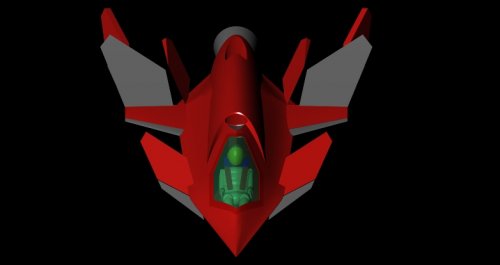 XF1_Rev_011_008 reduced.jpg42.8 KB · Views: 28
XF1_Rev_011_008 reduced.jpg42.8 KB · Views: 28 -
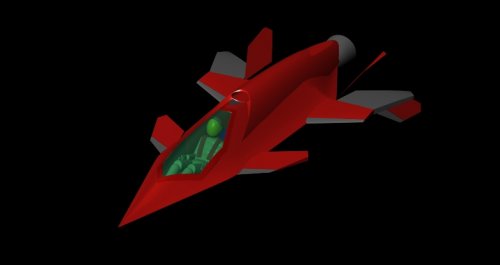 XF1_Rev_011_006 reduced.jpg33.1 KB · Views: 30
XF1_Rev_011_006 reduced.jpg33.1 KB · Views: 30 -
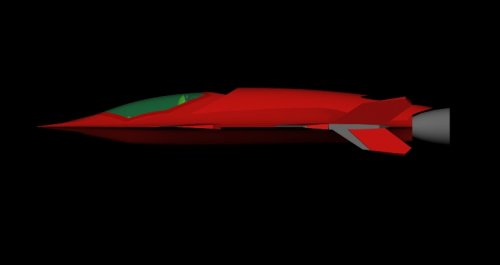 XF1_Rev_011_003 reduced.jpg22.2 KB · Views: 30
XF1_Rev_011_003 reduced.jpg22.2 KB · Views: 30 -
DreamSpaceGroup-NASA-CRuSR-RFI-Response-Mod-2.pdf891.1 KB · Views: 11
FutureSpaceTourist
ACCESS: Top Secret
- Joined
- 10 March 2010
- Messages
- 590
- Reaction score
- 34
FutureSpaceTourist said:Graphics/model of the XF1, from the da Vinci website, are attached.
Forgot to say that much higher resolution pictures are accessible from the photo gallery at http://www.davinciproject.com/news/index.php. Remaining couple of pictures attached.
Attachments
XP67_Moonbat
ACCESS: Top Secret
- Joined
- 16 January 2008
- Messages
- 2,271
- Reaction score
- 544
I was there.
- Joined
- 26 September 2008
- Messages
- 1,960
- Reaction score
- 746
FutureSpaceTourist said:According to a report at http://www.msnbc.msn.com/id/15303947/ the vehicles are modelled after Boeing's Bird of Prey experimental plane as well as the NASA X-36 prototype. Graphics/model of the XF1, from the da Vinci website, are attached.
And that's all the proof you need that this was not a real project. Why would you model your tourist vehicle after a military jet that had entirely different design goals? Answer: because they wanted it to look neat, not because it was actually supposed to do anything.
FutureSpaceTourist
ACCESS: Top Secret
- Joined
- 10 March 2010
- Messages
- 590
- Reaction score
- 34
To use some classic British understatement, I agree that the design is somewhat unconventional ... the following might be another way of saying it:
[quote author=Brian Feeney]
We really wanted to have something that would inspire people visually
[/quote]
Moonbat, is there anything you can and want to share about the design?
[quote author=Brian Feeney]
We really wanted to have something that would inspire people visually
[/quote]
Moonbat, is there anything you can and want to share about the design?
- Joined
- 26 September 2008
- Messages
- 1,960
- Reaction score
- 746
FutureSpaceTourist said:To use some classic British understatement, I agree that the design is somewhat unconventional ... the following might be another way of saying it:
>>We really wanted to have something that would inspire people visually
They really wanted to make it look like an X-Wing, but LucasFilm wanted a big licensing fee.
- Joined
- 27 May 2007
- Messages
- 676
- Reaction score
- 46
Feeney is an industrial designer, having designed the outline for example consumer water filters before... There's a story about him in the Rocketeers that details the X-Prize contestants, or what was that the name of book that's partially available somewhere...
FutureSpaceTourist
ACCESS: Top Secret
- Joined
- 10 March 2010
- Messages
- 590
- Reaction score
- 34
You're right, it is Rocketeers by Michael Belfiore (see http://michaelbelfiore.com/rocketeers). A great book BTW for any of you who haven't read it. Contains a detailed account of Scaled's efforts winning the X-prize, as well as behind the scenes with SpaceX and Bigelow Aerospace. Only problem is that the book is now 3 years old and a lot has happened since!
XP67_Moonbat
ACCESS: Top Secret
- Joined
- 16 January 2008
- Messages
- 2,271
- Reaction score
- 544
Not much to add, I asked a some guy sitting at the booth if this vehicle was modeled after the Boeing B.O.P. All he would do was smile and tell me he couldn't say. Whether this was out of some some security concern or he just didn't know, I can't say.. He did let me take a couple of pics of the model. However, I have yet to find them since moving from my last apartment.
If I do find the pics, I'll try and post them here.
Moonbat.
If I do find the pics, I'll try and post them here.
Moonbat.
FutureSpaceTourist
ACCESS: Top Secret
- Joined
- 10 March 2010
- Messages
- 590
- Reaction score
- 34
Here's another Ansari X-prize hopeful: the Cosmos Mariner by Lone Star Space Access. I assume this too made no real progress due to lack of funding (certainly the website disappeared a few years ago and hadn't been updated since 2004, with the last news item from 2000!).
The (suborbital) spaceplane was for launching satellites to low Earth orbit and space tourism. It had both jet engines, for HTHL, and jet-fuel powered rocket engines. The hope was to develop a subsequent orbit-capable Cosmos Mariner II.
Some Cosmos Mariner details:
[quote author=www.lonestarspace.com]
The fourth picture below is an alternative design that they were considering.
The company also planned the: "Cosmos One: an unmanned, horizontal takeoff and landing, reusable spaceplane launch system for placing light weight satellites into low Earth orbit. It will be designed and manufactured using Cosmos Mariner technology by a development team that includes Republic Aerospace Corporation, The College of Engineering at The University of Oklahoma, and Lone Star Space Access Corporation."
The (suborbital) spaceplane was for launching satellites to low Earth orbit and space tourism. It had both jet engines, for HTHL, and jet-fuel powered rocket engines. The hope was to develop a subsequent orbit-capable Cosmos Mariner II.
Some Cosmos Mariner details:
[quote author=www.lonestarspace.com]
- 100 feet long; 87 foot wing span; forked delta wings with a strake for pitch stability
- Weight: 136,000 Lb. max. takeoff; 120,000 Lb. at rocket ignition
- Composite and Aluminum Construction; semimonocoque fuselage; beam, rib and spar wings built into composite skin
- 3 to 4 passengers in cockpit; can carry a passenger module weighing 24,000 Lb.
- Airport maintenance and operation
- Horizontal takeoff and landing at ordinary airports
- Rocket engines: three of them at 90,000 Lb. thrust each; LOX/Fuel = 2.6
- Jet engines: two commercial turbofans; 25,000 Lb. static thrust each; specific fuel consumption of .4
- Fuel cell and jet engines for electrical power
- Electric and electrohydraulic actuated controls
- Expendable second stage for payload deployment
The fourth picture below is an alternative design that they were considering.
The company also planned the: "Cosmos One: an unmanned, horizontal takeoff and landing, reusable spaceplane launch system for placing light weight satellites into low Earth orbit. It will be designed and manufactured using Cosmos Mariner technology by a development team that includes Republic Aerospace Corporation, The College of Engineering at The University of Oklahoma, and Lone Star Space Access Corporation."
Attachments
FutureSpaceTourist
ACCESS: Top Secret
- Joined
- 10 March 2010
- Messages
- 590
- Reaction score
- 34
Fundamental Technology Systems (FTS) also had a proposed X-prize spaceplane: the Aurora. Some details are in the attached PDF from the X-prize website, see http://space.xprize.org/ansari-x-prize/fundamental-technology-systems.
The interesting thing about this company is that they were one of Scaled's subcontractors who worked on SpaceShipOne. Specifically, they provided sensors, hardware and some software for the SS1 TONU (tier-one navigation unit).
A description of an Aurora flight, from the defunct FTS website, follows:
[quote author=www.funtechsystems.com]
After final vehicle preflight checkout and range status checks, the crew enters the forward main hatch and straps in. Aurora is towed out to the engine start area at the take-off end of the runway. The ignition system ground safety pin is removed. The navigation system is initialized and communication with ground controllers verified. Upon ground controller clearance the main engine is pressurized and ignited for final status checks.
The brakes are released at half throttle starting the take-off roll. At 110 knots Aurora is rotated for liftoff, landing gear retracted, and the pilot pulls up to the initial climb attitude. The climb attitude is continually increased to maintain subsonic flight until above 60Kft. At 80Kft and with a flight path angle nearly 75 degrees above the horizon the engine is commanded to 100% power. The pilot rolls Aurora inverted for a good view of the earth. The main engine cuts off above 200Kft and 5000 fps. Aurora coasts in a ballistic trajectory above 350Kft. In preparation for reentry the pilot uses the RCS to orient Aurora into the initial deceleration attitude.
As Aurora decelerates the flight path angle is decreased until a turn back towards the departure field can be initiated. The best glide profile is commanded until the downwind initial point for landing is achieved. Aurora has a high L/D and the normal landing pattern is flown at 100 knots. On short final the airspeed is reduced to 80 knots for touchdown and roll out. Conventional hydraulic wheel brakes are used to slow the vehicle down. Upon stopping on the runway a tug is sent to tow the Aurora back to the hangar. The crew opens the main forward hatch and egresses for debriefing and celebrations.
[/quote]
P.S. Apologies for the small size of several of the attached pictures; I've been unable to locate larger versions.
The interesting thing about this company is that they were one of Scaled's subcontractors who worked on SpaceShipOne. Specifically, they provided sensors, hardware and some software for the SS1 TONU (tier-one navigation unit).
A description of an Aurora flight, from the defunct FTS website, follows:
[quote author=www.funtechsystems.com]
After final vehicle preflight checkout and range status checks, the crew enters the forward main hatch and straps in. Aurora is towed out to the engine start area at the take-off end of the runway. The ignition system ground safety pin is removed. The navigation system is initialized and communication with ground controllers verified. Upon ground controller clearance the main engine is pressurized and ignited for final status checks.
The brakes are released at half throttle starting the take-off roll. At 110 knots Aurora is rotated for liftoff, landing gear retracted, and the pilot pulls up to the initial climb attitude. The climb attitude is continually increased to maintain subsonic flight until above 60Kft. At 80Kft and with a flight path angle nearly 75 degrees above the horizon the engine is commanded to 100% power. The pilot rolls Aurora inverted for a good view of the earth. The main engine cuts off above 200Kft and 5000 fps. Aurora coasts in a ballistic trajectory above 350Kft. In preparation for reentry the pilot uses the RCS to orient Aurora into the initial deceleration attitude.
As Aurora decelerates the flight path angle is decreased until a turn back towards the departure field can be initiated. The best glide profile is commanded until the downwind initial point for landing is achieved. Aurora has a high L/D and the normal landing pattern is flown at 100 knots. On short final the airspeed is reduced to 80 knots for touchdown and roll out. Conventional hydraulic wheel brakes are used to slow the vehicle down. Upon stopping on the runway a tug is sent to tow the Aurora back to the hangar. The crew opens the main forward hatch and egresses for debriefing and celebrations.
[/quote]
P.S. Apologies for the small size of several of the attached pictures; I've been unable to locate larger versions.
Attachments
FutureSpaceTourist
ACCESS: Top Secret
- Joined
- 10 March 2010
- Messages
- 590
- Reaction score
- 34
Many thanks to Randy (RanulfC) for finding the following lenticular orbital space tourism concept: http://www.nianet.org/rascal/forum2005/presentations/georgia_paper.pdf. There's also a video clip http://www.nianet.org/rascal/forum2005/presentations/georgia_video_groundtrack.mov
It was produced by Georgia Tech University and called a Reusable Exploration Vehicle (REV) for space tourism. Plan was to launch it on top of the Falcon 5 rocket. The concept won 2nd prize in the graduate section of the 2005 RASC-AL prize (Revolutionary Aerospace Systems Concepts - Academic Linkage).
P.S. Wider discussion of a 1960s Convair lenticular design, which led to the discovery of this space tourism concept, is in the thread http://www.secretprojects.co.uk/forum/index.php/topic,10223.0.html
It was produced by Georgia Tech University and called a Reusable Exploration Vehicle (REV) for space tourism. Plan was to launch it on top of the Falcon 5 rocket. The concept won 2nd prize in the graduate section of the 2005 RASC-AL prize (Revolutionary Aerospace Systems Concepts - Academic Linkage).
P.S. Wider discussion of a 1960s Convair lenticular design, which led to the discovery of this space tourism concept, is in the thread http://www.secretprojects.co.uk/forum/index.php/topic,10223.0.html
Attachments
airrocket
Dreams To Reality
Dream Space XF1-A vehicle was mentioned as possible sub-orbital concept entry for the NASA CRuSR project.
http://suborbitalex.arc.nasa.gov/platforms/xf1
http://suborbitalex.arc.nasa.gov/platforms/xf1
FutureSpaceTourist
ACCESS: Top Secret
- Joined
- 10 March 2010
- Messages
- 590
- Reaction score
- 34
airrocket said:Dream Space XF1-A vehicle was mentioned as possible sub-orbital concept entry for the NASA CRuSR project.
Yes, but it appears to be vapourware (see discussion earlier in this thread that starts with this post). The website cited in their CRuSR submission doesn't even exist ...
- Joined
- 26 September 2008
- Messages
- 1,960
- Reaction score
- 746
Keep in mind that the point of CRuSR is to buy services once they actually exist, not to fund new vehicles (and really, do we need more theoretical vehicles? Seems like there are already plenty of people promising stuff and not delivering, so there's no need to throw another unicorn onto the big pile of unicorns.). Of course, there are problems in actually doing that. What do you do if there's a bunch of money sitting around and no actual services to buy?
FutureSpaceTourist
ACCESS: Top Secret
- Joined
- 10 March 2010
- Messages
- 590
- Reaction score
- 34
blackstar said:What do you do if there's a bunch of money sitting around and no actual services to buy?
I think NASA heard you
So somewhere in between paying for development and waiting for vehicles that can meet the full requirements.
- Joined
- 26 September 2008
- Messages
- 1,960
- Reaction score
- 746
FutureSpaceTourist said:I think NASA heard youThe first CRuSR awards last week to Masten and Armadillo ($250k and $225k respectively, a few details here and here) are not for flights to 100+ km. Instead the initial flights are to between about 5 and 40 km.
So somewhere in between paying for development and waiting for vehicles that can meet the full requirements.
I'm not sure what the exact federal contracting rules are, but I believe that as long as the amount is less than $1 million, a federal agency does not have to inform Congress that it is spending money on specific things. So even though they don't have an approved budget for CRuSR, they can shift half a million dollars from other things and use it for this purpose.
But this is paying rocket developers, not delivering capabilities to scientists. Also, I'm not sure what requirement there is for such low level flights. So at least initially they're supporting a nascent industry, but not acquiring services that have a demonstrated need.
FutureSpaceTourist
ACCESS: Top Secret
- Joined
- 10 March 2010
- Messages
- 590
- Reaction score
- 34
Hopper was a proposed ESA RLV spaceplane. (A sub-scale test craft, Phoenix, is discussed in http://www.secretprojects.co.uk/forum/index.php/topic,11170.0.html.)
Robert Goehlich proposed a space tourism variant of Hopper called Hopper Plus. This is described in:
Some figures from the paper are attached. Characteristics of the vehicle and it's flight profile are:
[quote author=http://www.robert-goehlich.de/files/Tourist%20RLV%20Fleet%20(R.A.%20Goehlich,%20Arcachon,%202003).pdf]
Flight Profile
Hopper Plus would start horizontally on a rail sled at Kourou Spaceport on a 4 km long track. For simplicity of operations, the rail sled would be unpowered. Its design is similar to the emergency acceleration system of the German maglev high-speed train Transrapid currently operated in China. Three rocket main engines would accelerate Hopper Plus to a height of 100 km. Then it would drift to a maximum height of 150 km before it would reenter in the atmosphere and land horizontally 4500 km downrange on a runway [...] Total flight time would be around 30 minutes, of which 5 minutes are in weightlessness.
[...]
Vehicle
Overall length of Hopper Plus is assumed 50 m with a wingspan of 27 m as shown in Figure 4. Its gross lift-off weight would be 460 Mg including the passenger module. Hopper Plus might make widely use of Ariane 5 technology and elements, thus becoming within reach for midterm realization. It would use three Vulcain 3R engines, which are Vulcain 3 engines adapted to reusability.
[...]
Passenger Module
Cargo bay dimensions are supposed to be Ø5,4 m x 16,7 m. For comparison, Figure 5 shows an aircraft cabin arrangement for high density seating with similar dimensions allowing to transport 50 passengers (5 x 10 rows) with same dimensions. Because of higher standard of space applications and more comfort for passengers a 4 x 8 rows arrangement is used for the scenario. Passenger module dimensions might be Ø4,7 m x 16,0 m and it would have a dry mass of 3,8 Mg. Usable volume per passenger would be about 4 m³. It includes cabin structure (2,0 Mg), 30 passenger seats (1,0 Mg), 2 stewardess seats (0,1 Mg), 1 toilet (0,1 Mg), an environmental control system (0,5 Mg), and a 3,0 m long compartment for zero gravity experience for passengers (0,1 Mg).
[/quote]
Robert Goehlich proposed a space tourism variant of Hopper called Hopper Plus. This is described in:
Goehlich, R.A. & Ruecker, U. (2003). "Life-cycle Program Proposal for a Commercial Tourist RLV Fleet Operated from Kourou Spaceport," presented at the 3rd International Symposium on Atmospheric Reentry Vehicles and Systems, Arcachon, France.
Some figures from the paper are attached. Characteristics of the vehicle and it's flight profile are:
[quote author=http://www.robert-goehlich.de/files/Tourist%20RLV%20Fleet%20(R.A.%20Goehlich,%20Arcachon,%202003).pdf]
Flight Profile
Hopper Plus would start horizontally on a rail sled at Kourou Spaceport on a 4 km long track. For simplicity of operations, the rail sled would be unpowered. Its design is similar to the emergency acceleration system of the German maglev high-speed train Transrapid currently operated in China. Three rocket main engines would accelerate Hopper Plus to a height of 100 km. Then it would drift to a maximum height of 150 km before it would reenter in the atmosphere and land horizontally 4500 km downrange on a runway [...] Total flight time would be around 30 minutes, of which 5 minutes are in weightlessness.
[...]
Vehicle
Overall length of Hopper Plus is assumed 50 m with a wingspan of 27 m as shown in Figure 4. Its gross lift-off weight would be 460 Mg including the passenger module. Hopper Plus might make widely use of Ariane 5 technology and elements, thus becoming within reach for midterm realization. It would use three Vulcain 3R engines, which are Vulcain 3 engines adapted to reusability.
[...]
Passenger Module
Cargo bay dimensions are supposed to be Ø5,4 m x 16,7 m. For comparison, Figure 5 shows an aircraft cabin arrangement for high density seating with similar dimensions allowing to transport 50 passengers (5 x 10 rows) with same dimensions. Because of higher standard of space applications and more comfort for passengers a 4 x 8 rows arrangement is used for the scenario. Passenger module dimensions might be Ø4,7 m x 16,0 m and it would have a dry mass of 3,8 Mg. Usable volume per passenger would be about 4 m³. It includes cabin structure (2,0 Mg), 30 passenger seats (1,0 Mg), 2 stewardess seats (0,1 Mg), 1 toilet (0,1 Mg), an environmental control system (0,5 Mg), and a 3,0 m long compartment for zero gravity experience for passengers (0,1 Mg).
[/quote]
Attachments
FutureSpaceTourist
ACCESS: Top Secret
- Joined
- 10 March 2010
- Messages
- 590
- Reaction score
- 34
Space Clipper International was an apparently short-lived spin-off in the early 2000s from Universal Space Lines.
They had a couple of space tourism vehicle concepts SC-1 and SC-2:
[quote author=http://www.spacefuture.com/vehicles/designs.shtml]
The SpaceClipper SC-1 is a suborbital reusable VTOL spaceplane proposed by SpaceClipper International, designed to carry up to ten passengers and two flight crew to an altitude of 140 km and back. Although it descends horizontally, it takes off and lands vertically.
The SC-1 features shield doors which protect the craft during ascent and descent, but open to allow views of space and Earth for the four minutes that the vehicle is weightless at the top of its trajectory.
A follow-on fully orbital spaceplane dubbed SC-2 is also proposed, building on the experience gained in developing and operating the SC-1
[/quote]
I've been unable to locate any further information and only a couple of small pictures (attached).
Does anyone have any more details?
They had a couple of space tourism vehicle concepts SC-1 and SC-2:
[quote author=http://www.spacefuture.com/vehicles/designs.shtml]
The SpaceClipper SC-1 is a suborbital reusable VTOL spaceplane proposed by SpaceClipper International, designed to carry up to ten passengers and two flight crew to an altitude of 140 km and back. Although it descends horizontally, it takes off and lands vertically.
The SC-1 features shield doors which protect the craft during ascent and descent, but open to allow views of space and Earth for the four minutes that the vehicle is weightless at the top of its trajectory.
A follow-on fully orbital spaceplane dubbed SC-2 is also proposed, building on the experience gained in developing and operating the SC-1
[/quote]
I've been unable to locate any further information and only a couple of small pictures (attached).
Does anyone have any more details?
Attachments
FutureSpaceTourist
ACCESS: Top Secret
- Joined
- 10 March 2010
- Messages
- 590
- Reaction score
- 34
I see Brian Feeney is still able to generate some press interest about the XF1:
[quote author=http://www.cbc.ca/technology/story/2010/11/12/spaceflight-x-prize-feeney-da-vinci.html]
Canadian Spaceflight Dreams Live On
A new, Canadian commercial spacecraft prototype could launch as soon as next year, a former contender for the Ansari X Prize hopes.
"We feel extremely confident that we can be airborne within 2011," said Brian Feeney of the new spacecraft project that grew out of the Toronto-based Da Vinci Project.
"Are we getting to space by the end of 2011? You can't say for absolute certainty until you're airborne and you're flight testing," he said Friday.
[...]
But the huge, unwieldy team of 1,000 Da Vinci Project volunteers has been replaced by just half a dozen DreamSpace Group staff. Half a dozen more people are working on the XF1's propulsion system through a private partner company based in California.
Up until now, the project has relied on funding left over from the Da Vinci project from sponsors like the online casino GoldenPalace.com.
But Feeney estimates he will need $2.5 million in venture capital funding to build an XF1 prototype carrying one person and another $12.5 million to build two commercial three-person spacecraft.
[/quote]
Saying you'll be flight testing next year before you've got funding may be a little optimistic. I think the article's title though is spot on.
[quote author=http://www.cbc.ca/technology/story/2010/11/12/spaceflight-x-prize-feeney-da-vinci.html]
Canadian Spaceflight Dreams Live On
A new, Canadian commercial spacecraft prototype could launch as soon as next year, a former contender for the Ansari X Prize hopes.
"We feel extremely confident that we can be airborne within 2011," said Brian Feeney of the new spacecraft project that grew out of the Toronto-based Da Vinci Project.
"Are we getting to space by the end of 2011? You can't say for absolute certainty until you're airborne and you're flight testing," he said Friday.
[...]
But the huge, unwieldy team of 1,000 Da Vinci Project volunteers has been replaced by just half a dozen DreamSpace Group staff. Half a dozen more people are working on the XF1's propulsion system through a private partner company based in California.
Up until now, the project has relied on funding left over from the Da Vinci project from sponsors like the online casino GoldenPalace.com.
But Feeney estimates he will need $2.5 million in venture capital funding to build an XF1 prototype carrying one person and another $12.5 million to build two commercial three-person spacecraft.
[/quote]
Saying you'll be flight testing next year before you've got funding may be a little optimistic. I think the article's title though is spot on.
FutureSpaceTourist
ACCESS: Top Secret
- Joined
- 10 March 2010
- Messages
- 590
- Reaction score
- 34
Canyon Space Team was a small non-profit group that hoped to compete in the Ansari X-prize. Like many others progress appears to have been hampered by a lack of funding.
They were studying an air launched spaceplane concept. Some information from their now defunct website:
[quote author=http://www.canyonspaceteam.org/]

The Vehicle
A possible concept that the CST is exploring, and the one that has received the most internal and external attention, is to use an air launched, rocket-powered vehicle incorporating a wing to achieve the necessary 100 Km. Above is an initial design sketch.
The Flight Profile
The flight simulation for the X-Prize vehicle has mostly concentrated on concepts similar to the winged vehicle shown above. In the most encouraging simulation concept the vehicle would be dropped at approximately 15,000 Ft, light its engine and actually start descending to build up speed. It would then pull back to around 70 degrees and climb until reaching engine burnout at approximately 200,000 ft. After coasting through 300,000 ft. the vehicle would use exo-atmospheric controls to reorient itself for a ballistic reentry. After reentering the atmosphere, the pilot would use regular aerodynamic controls to glide the vehicle to a safe landing.
[/quote]
The project was imaginatively called XPV (X-prize vehicle). Attached are some graphics of the spaceplane and carrier aircraft, as well a picture of a subscale spaceplane model.
BTW There appears to be a slightly older copy of their website available at http://www.modelstation.com/cst/.
They were studying an air launched spaceplane concept. Some information from their now defunct website:
[quote author=http://www.canyonspaceteam.org/]
The Vehicle
A possible concept that the CST is exploring, and the one that has received the most internal and external attention, is to use an air launched, rocket-powered vehicle incorporating a wing to achieve the necessary 100 Km. Above is an initial design sketch.
The Flight Profile
The flight simulation for the X-Prize vehicle has mostly concentrated on concepts similar to the winged vehicle shown above. In the most encouraging simulation concept the vehicle would be dropped at approximately 15,000 Ft, light its engine and actually start descending to build up speed. It would then pull back to around 70 degrees and climb until reaching engine burnout at approximately 200,000 ft. After coasting through 300,000 ft. the vehicle would use exo-atmospheric controls to reorient itself for a ballistic reentry. After reentering the atmosphere, the pilot would use regular aerodynamic controls to glide the vehicle to a safe landing.
[/quote]
The project was imaginatively called XPV (X-prize vehicle). Attached are some graphics of the spaceplane and carrier aircraft, as well a picture of a subscale spaceplane model.
BTW There appears to be a slightly older copy of their website available at http://www.modelstation.com/cst/.
Attachments
FutureSpaceTourist
ACCESS: Top Secret
- Joined
- 10 March 2010
- Messages
- 590
- Reaction score
- 34
Beyond Earth Enterprises (http://www.beyond-earth.com/) is a small company that does suborbital small sounding rocket flights. They have ambitions to get into space tourism and some years ago had a spaceplane design (Raven) for the Ansari X-prize. They weren't official X-prize entrants; I assume lack of funding meant they never got beyond the concept stage.
The following description of Raven is taken from their website in 2003:
[quote author=http://web.archive.org/web/20031008174821/http://www.beyond-earth.com/projects/raven.shtml]
The Raven is our first manned craft. As a potential X-prize contender, she is designed to launch and land from a standard airport runway.
Raven is a sub-orbital craft capable of reaching a maximum altitude of 200 Kilometers. Carrying a total of 3 people (1 pilot, 2 passengers) she is not a big ship and cannot carry a large payload. But from 200 Km up, you can see the curvature of the earth, experience weightlessness, and enjoy a thrill like no other.
[/quote]
There's a 2002 interview with the company founder, Joe Latrell, about the company at http://www.spacefuture.com/journal/journal.cgi?art=2002.10.29.interview_Joe_Latrell.
The following description of Raven is taken from their website in 2003:
[quote author=http://web.archive.org/web/20031008174821/http://www.beyond-earth.com/projects/raven.shtml]
The Raven is our first manned craft. As a potential X-prize contender, she is designed to launch and land from a standard airport runway.
Raven is a sub-orbital craft capable of reaching a maximum altitude of 200 Kilometers. Carrying a total of 3 people (1 pilot, 2 passengers) she is not a big ship and cannot carry a large payload. But from 200 Km up, you can see the curvature of the earth, experience weightlessness, and enjoy a thrill like no other.
[/quote]
There's a 2002 interview with the company founder, Joe Latrell, about the company at http://www.spacefuture.com/journal/journal.cgi?art=2002.10.29.interview_Joe_Latrell.
Attachments
FutureSpaceTourist
ACCESS: Top Secret
- Joined
- 10 March 2010
- Messages
- 590
- Reaction score
- 34
RanulfC said:Quick "correction" note; you listed the Cosmos Mariner as an "unmanned" vehicle.
Did I?
FutureSpaceTourist said:The company also planned the: "Cosmos One: an unmanned, horizontal takeoff and landing, reusable spaceplane launch system for placing light weight satellites into low Earth orbit.
As I understand it the Cosmos One is not the same as the Cosmos Mariner?
FutureSpaceTourist
ACCESS: Top Secret
- Joined
- 10 March 2010
- Messages
- 590
- Reaction score
- 34
Marcus Aerospace LLC was founded by Georgia Tech alumni to help "Open the Heavens" by developing and operating RLVs. They had a concept for a TSTO RLV called Explorer, which could be used to take passengers/space tourists to orbit.
The original website (www.marcusaerospace.com) disappeared in about 2004 and was last updated in 2003. However, there is a copy at http://www.alieninthebox.com/marcus_aerospace/index.html:
[quote author=http://www.alieninthebox.com/marcus_aerospace/explorer.html]
Explorer RLV: Two-stage to orbit reusable launch vehicle
The Explorer series of vehicles consists of the sequential development and operation of a two-stage to orbit reusable launch vehicle capable of placing a small number of people (4-6) or a small satellite (<1000 lb) into low earth orbit. The vehicle will consist of an Orbiter stage and a Booster stage.
The vehicle is a sled-launched horizontal takeoff with both stages returning by horizontal landing, the Booster stage having installed jet engines for powered return to the launch site while the Orbiter stage lands as an unpowered lifting body, similar to the Space Shuttle. The preliminary vehicle dimensions are:
[...]
Once the Orbiter stage is certified, we will operate it in the space tourism market and as a launch vehicle for micro-satellites (<100 lb). This revenue stream will help offset development costs and verify the market before continuing with further development of the Booster stage, which will give the Orbiter stage enough additional energy to reach low earth orbit and service the following markets.
The primary market is carrying passengers to orbit, with a secondary market of launching small satellites.
[/quote]
I don't think this ever got beyond a concept proposal, but please shout if you know different!
The original website (www.marcusaerospace.com) disappeared in about 2004 and was last updated in 2003. However, there is a copy at http://www.alieninthebox.com/marcus_aerospace/index.html:
[quote author=http://www.alieninthebox.com/marcus_aerospace/explorer.html]
Explorer RLV: Two-stage to orbit reusable launch vehicle
The Explorer series of vehicles consists of the sequential development and operation of a two-stage to orbit reusable launch vehicle capable of placing a small number of people (4-6) or a small satellite (<1000 lb) into low earth orbit. The vehicle will consist of an Orbiter stage and a Booster stage.
The vehicle is a sled-launched horizontal takeoff with both stages returning by horizontal landing, the Booster stage having installed jet engines for powered return to the launch site while the Orbiter stage lands as an unpowered lifting body, similar to the Space Shuttle. The preliminary vehicle dimensions are:
| Length | Wingspan | ΔV | Liftoff Weight | |
| m (ft) | m (ft) | m/s (ft/s) | kg (lbs) | |
| Orbiter | 17 (57) | 27.0 (90) | 5500 (18,300) | 77,400 (170,300) |
| Booster | 35 (117) | 37.4 (125) | 3500 (11,700) | 300,000 (660,000) |
| Overall | 35 (117) | 37.4 (125) | 9000 (30,000) | 377,400 (830,300) |
[...]
Once the Orbiter stage is certified, we will operate it in the space tourism market and as a launch vehicle for micro-satellites (<100 lb). This revenue stream will help offset development costs and verify the market before continuing with further development of the Booster stage, which will give the Orbiter stage enough additional energy to reach low earth orbit and service the following markets.
The primary market is carrying passengers to orbit, with a secondary market of launching small satellites.
[/quote]
I don't think this ever got beyond a concept proposal, but please shout if you know different!
Attachments
FutureSpaceTourist
ACCESS: Top Secret
- Joined
- 10 March 2010
- Messages
- 590
- Reaction score
- 34
Jim Benson founded the Benson Space Company (BSC) in 2006 (after leaving SpaceDev, which he was also the founder of). BSC was intended to be a space tourism company. The original intention was to use SpaceDev's proposed orbital Dream Chaser vehicle.
However, in 2007 BSC announced a new suborbital VTHL vehicle design in the following press release:
BSC ended with Jim's death in 2008.
However, in 2007 BSC announced a new suborbital VTHL vehicle design in the following press release:
POWAY, Calif., May 25 /PRNewswire/ -- As a result of a five month-long study by SpaceDev, Benson Space Company (BSC) has chosen to pursue a fresh approach in the design of its Dream Chaser spaceship, it was announced today by BSC Chairman and President Jim Benson.
Rather than using the orbital NASA HL-20 vehicle as a model, BSC will base its suborbital spaceship on an amalgam of the NASA and Air Force X-2, X-15 and T-38 vehicles. While the new design is safer and more aerodynamic, explains Benson, it will also be easier and faster to construct, allowing BSC to remain on-schedule to make its initial commercial spaceflights in 2009 -- aiming to provide the first, safest and best astronaut-making spaceflights for the emerging space tourism market.
"The mandate of our initial five-month Phase I study, which began in November, was a design review to ensure that we had the very best spaceship possible. During the past two months a small, highly experienced team has taken a fresh look and concluded that we can do better," says Benson. "To that end, the new spaceship will incorporate the best elements selected
from other successful vehicles. This will result in a spaceship that provides a better ride and even more spectacular views, and at this early stage we will lose little time in bringing it to the commercial market."
The new Dream Chaser spaceship design is lighter and sleeker, resulting in less drag and requiring less propulsion than the earlier design. The vehicle, powered by safe hybrid rocket motors, will launch vertically and glide to a landing at the launch site. A safer carefree reentry, after
achieving an altitude of at least 65 miles, will subject passengers to minimal G-forces, compared to other designs. It will also have many large, well-placed windows for ideal passenger views of the Earth and space.
BSC ended with Jim's death in 2008.
Attachments
FutureSpaceTourist
ACCESS: Top Secret
- Joined
- 10 March 2010
- Messages
- 590
- Reaction score
- 34
Here's a vehicle and (I assume) defunct company that I've only found the one reference for, as follows:
[quote author=http://www.spacefuture.com/vehicles/designs.shtml]
The Alpha Project is a fully reusable two stage vehicle proposed by World Aerospace, Inc. The upper stage, dubbed the Alpha CX-1A SRV (Space Reusable Vehicle) is a three-person spaceplane designed to take one pilot and two mission specialists into space. Intended to use off-the-shelf technology where possible, the CX-1A may also be launched from the ground as a suborbital spacecraft.
Interestingly, three potential configurations for the lower stage (or launch vehicle) are being proposed as development proceeds:
The first is an Air Launched Horizontal Landing (ALHL) solid rocket booster RLV derived from the Pegasus by Orbital Sciences Corporation. This vehicle will carry the CX-1A upper stage for the flight test phase.
The second is a HTOL liquid rocket flyback booster RLV. This vehicle will carry the CX-1A in the piggyback configuration and is ultimately expected to evolve into the final RLV lower stage as the design matures.
The third is a VTOL rocket booster option. In this configuration the CX-1A will be launched atop currently available commercial launch vehicles such as the Boeing Delta IV-M EELV, the LMCO Atlas V 500, and an RLV based on the Thor (a former USAF ICBM)
World Aerospace, Inc. is targeting the Alpha series of space planes for orbital and suborbital space tours, as well as crew transfer, small satellite launches, and emergency rescue.
[/quote]
Has any one ever come across it any where else? I assume it never progressed beyond some concept proposal?
[quote author=http://www.spacefuture.com/vehicles/designs.shtml]
The Alpha Project is a fully reusable two stage vehicle proposed by World Aerospace, Inc. The upper stage, dubbed the Alpha CX-1A SRV (Space Reusable Vehicle) is a three-person spaceplane designed to take one pilot and two mission specialists into space. Intended to use off-the-shelf technology where possible, the CX-1A may also be launched from the ground as a suborbital spacecraft.
Interestingly, three potential configurations for the lower stage (or launch vehicle) are being proposed as development proceeds:
The first is an Air Launched Horizontal Landing (ALHL) solid rocket booster RLV derived from the Pegasus by Orbital Sciences Corporation. This vehicle will carry the CX-1A upper stage for the flight test phase.
The second is a HTOL liquid rocket flyback booster RLV. This vehicle will carry the CX-1A in the piggyback configuration and is ultimately expected to evolve into the final RLV lower stage as the design matures.
The third is a VTOL rocket booster option. In this configuration the CX-1A will be launched atop currently available commercial launch vehicles such as the Boeing Delta IV-M EELV, the LMCO Atlas V 500, and an RLV based on the Thor (a former USAF ICBM)
World Aerospace, Inc. is targeting the Alpha series of space planes for orbital and suborbital space tours, as well as crew transfer, small satellite launches, and emergency rescue.
[/quote]
Has any one ever come across it any where else? I assume it never progressed beyond some concept proposal?
Attachments
FutureSpaceTourist
ACCESS: Top Secret
- Joined
- 10 March 2010
- Messages
- 590
- Reaction score
- 34
FutureSpaceTourist said:However, in 2007 BSC announced a new suborbital VTHL vehicle design
There's a very brief animation of the vechicle concept in the following video, but it does at least give a better feel for the vehicle than the couple of images in the previous post:
http://www.youtube.com/watch?v=xoj4QZxA1hI
Sadly the images are out of date…this deserves a book.Not convinced it's a great concept if you factor in cost. It hasn't gone anywhere because they couldn't raise the €1 billion needed!
I've been having fun trawling through this website looking for space tourism spaceplane concepts and there are quite a few. (If you're looking for space tourism rockets try here.)
All the following spaceplanes never achieved (or are yet to achieve) the funding required (which in some cases led to the closure of the associated companies):
The two I know of in development that do have funding are:
- Advent Launch Services Advent

- ARCA Orizont 2B

- Benson Space Company suborbital vehicle design

- Beyond Earth Enterprises Raven

- Bristol Spaceplanes Ascender

- Bristol Spaceplanes Spacecab

- Bristol Spaceplanes Spacebus

- Canyon Space Team XPV

- Cerulean Freight Forwarding's Kitten

- Cerulean Freight Forwarding's Calico and Angora

- da Vinci Project / DreamSpace

- Dassault VEHRA / VSH (VSH picture below)

- DLR Spaceliner

- EADS Astrium (as above)

- Fundamental Technology Systems' Aurora

- Georgia Tech's Reusable Exploration Vehicle

- Hopper Plus

- Kelly Space Astroliner (I believe they were an X-prize competitor so must have been proposed for tourism use)

- Kistler Rocketplane

- Lone Star Space Access' Cosmos Mariner

- Malaysian chapter of STS MC

- Malaysian chapter of STS MX

- Marcus Aerospace Explorer

- Orbital Sciences Corporation CCDev2 proposal

- PanAero Condor-X

- PanAero Millennium Express

- PanAero SabreRocket

- PanAero X Van

- PanAero X Van 2001

- PanAero X Van 2008

- PanAero X Van 2011

- Pioneer Pathfinder Rocketplane

- Project Enterprise

- Myasishchev C-21/Explorer

- Myasishchev MK-91

- Reaction Engine's Skylon (perhaps not primarily for tourism but does have passenger module)

- Space Access' Skyhopper

- Space Clipper International SC-1

- SpaceDev Dream Chaser

- Spaceflight SF-01

- Spacelinq

- Vela Space Cruiser

- XCOR Xerus

- World Aerospace Inc Alpha spaceplane

Of course the only potential tourism spaceplane to have actually flown to space is SpaceShipOne (although hopefully SpaceShipTwo will make it in testing in the next 12 months or so).
I'm sure there are some other tourism spaceplanes out there, please raise any I've missed.
Update 29/05/2010: added PanAero X-prize concepts Condor-X, SabreRockect and X Van
Update 01/06/2010: added further PanAero concepts, FTS Aurora, CFF Calico & Angora and Lone Star Space Access Cosmos Mariner
Update 12/06/2010: added Space Access' Skyhopper
Update 22/06/2010: added Georgia Tech's Reusable Exploration Vehicle
Update 26/06/2010: added Spaceflight SF-01
Update 27/06/2010: listed Bristol Spaceplanes' Spacecab and Spacebus separately
Update 09/07/2010: added link to separate space tourism rocket list
Update 26/09/2010: added Advent Launch Services X-prize entry
Update 09/10/2010: added Malaysian chapter of Space Tourism Society MC and MX concepts
Update 28/10/2010: added Hopper Plus concept and Space Clipper International SC-1
Update 29/10/2010: added XCOR Xerus
Update 31/10/2010: added ARCA Orizont 2B
Update 17/11/2010: added Canyon Space Team XPV and Beyond Earth Enterprises Raven
Update 22/11/2010: added Marcus Aerospace Explorer
Update 20/12/2010: added Orbital Sciences Corporation CCDev2 proposal
Update 10/04/2011: added Spacelinq
Update 19/06/2011: added Benson Space Company suborbital vehicle and World Aerospace Inc Alpha spaceplane

